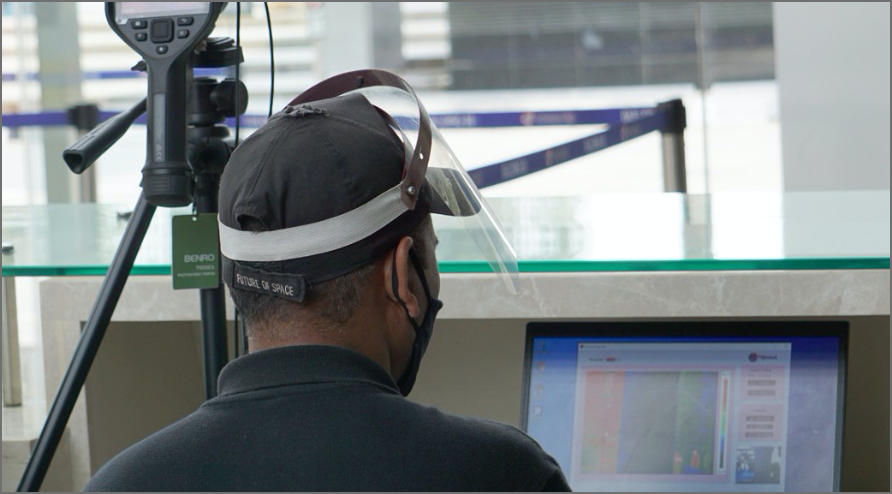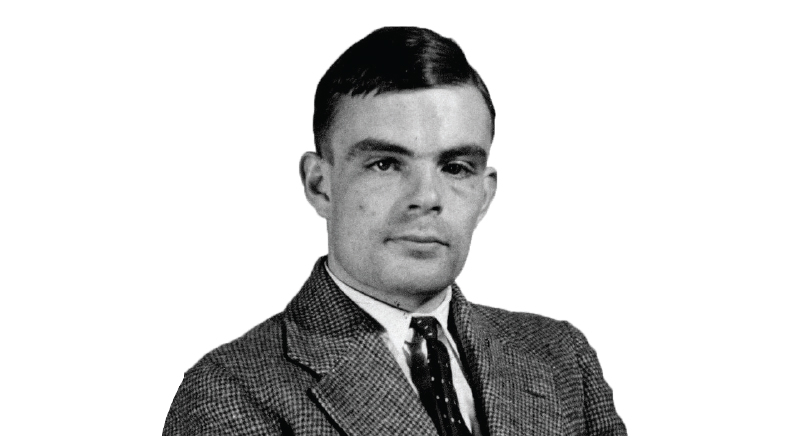Curcumin: Hype or hope?
-
- from Shaastra :: vol 02 issue 03 :: May - Jun 2023

Researchers believe the time has come to acknowledge that curcumin does more than just flavour sambar.
For biochemist G. Padmanaban, 2015 was an exciting year. Tu Youyou had won the Nobel Prize for discovering artemisinin, an antimalarial drug derived from a bark used for 2,000 years in Chinese traditional medicine. The prize was a much-awaited validation of plant-based cures for Padmanaban, who had been working for decades on curcumin, another natural compound with similar ancient origins.
That year, the former Director of the Bengaluru-based Indian Institute of Science (IISc) and his colleagues published a study (go.nature.com/3HaWnmi) showing, for the first time, how curcumin could prevent the development of neurological symptoms linked to cerebral malaria, a particularly dangerous manifestation of malaria, in lab mice. The compound could stop parasite-infected red blood cells from crossing the blood-brain barrier. Crucially, combining curcumin with arteether, a derivative of the drug that won Tu the Nobel, helped save the mice from certain death, completely curing them of the disease.
It was only a matter of time, Padmanaban thought, before curcumin also received due recognition, at least as a "universal adjunct drug" if not a standalone cure (bit.ly/curcumin-nobel). Two years later, however, a deeply critical review in the Journal of Medicinal Chemistry (bit.ly/curcumin-criticism) cast a shadow over curcumin's future. Despite 15,000 papers, more than 100 clinical trials, and millions of dollars funnelled into studies, not a single effective curcumin-based drug had made it to pharmacy shelves, and probably never will, the paper said.
Curcumin has several problematic properties – for example, it gets broken down in the body within minutes. "Unfortunately, no form of curcumin, or its closely related analogues, appears to possess the properties required for a good drug candidate," the review said.
"That review was a dampener," Padmanaban says. He shot back a rebuttal, outlining the success he had seen with cerebral malaria, concluding that a "summary dismissal of an entire area of research is like throwing the baby out with the bath water".
Padmanaban believes that curcumin might create a "memory effect", modulating some parts of the host's adaptive immune system. These mechanisms, he says, need to be investigated.
Such debates often come up because curcumin has long confounded researchers about the exact mechanisms of its action. Padmanaban believes that medicinal chemists cannot understand the way it works. In cerebral malaria, the parasite initially disappears after treatment but re-emerges in a few days. But when mice were given the arteether-curcumin combination, they surprisingly had large amounts of anti-parasite antibodies swirling in their blood around the time of this reappearance.
Padmanaban believes that curcumin might create a "memory effect", modulating some parts of the host's adaptive immune system. These mechanisms, he says, need to be investigated in detail. "But time is too short for me," adds Padmanaban, who turned 85 in March. "I want younger people to get into the mechanisms much deeper."
A younger generation of scientists, indeed, is taking forward the research on curcumin in the hope of filling the knowledge gap. "Curcumin has great potential," says Swati Biswas, Professor, Department of Pharmacy, BITS Pilani, Hyderabad. "It is anti-cancer, anti-inflammatory, and has all sorts of applications, including wound-healing."
PERPLEXING PROPERTIES
Over 200 years ago, French scientists Henri Vogel and Pierre Pelletier first extracted a yellow mixture from turmeric — the rootstalk that has spiced up sambars and other Indian dishes for thousands of years — and called it curcumin (it later turned out to be a mixture of turmeric oil and resin). In the following years, scientists teased out curcumin's chemical structure, and tested its antibacterial and antiseptic abilities. In the latter half of the 20th century, more effects were uncovered: it could scavenge toxic free radicals, boost the growth of beneficial gut bacteria, clamp down on inflammatory pathways linked to several diseases, and prevent the formation of new blood vessels that tumour cells needed to survive (bit.ly/curcumin-molmed).
The good news is that curcumin can bind to many different molecular targets. This has led scientists to believe it can block enzymes and proteins linked to various diseases.
The bad news is that curcumin can bind to many different molecular targets. "Pharma companies in general would like a drug molecule to cure a specific disease with a specific site of action," wrote Padmanaban in Resonance.
Some scientists are also motivated by epidemiological evidence, such as the historically lower colorectal cancer rates in India and other countries where turmeric is regularly consumed.
Some have also called curcumin a pan-assay interference compound — in early screening tests, it gives false "readouts" that do not necessarily mean it is blocking a desired protein or molecule (go.nature.com/3ovnkKT).
Another bottleneck is its poor bioavailability — it is not known how much of the compound reaches the bloodstream and eventually the organs. A 1978 report (bit.ly/curcumin-rat) said curcumin-fed rats excreted most of it out of their system unchanged.
Curcumin also doesn't play well with other molecules, especially water. "It has a long core hydrophobic body, and some aromatic rings on both sides," explains Palash Sanphui, Research Assistant Professor, Department of Chemistry, SRM Institute of Science and Technology, Chennai. He adds that while a 500mg tablet of a paracetamol may dissolve in a cup of water, a 10mg tablet of curcumin might need one litre of water. "This is one of the reasons why curcumin has not been commercialised."
BOOSTING BIOAVAILABILITY
Despite these challenges, several Indian researchers still believe in curcumin's therapeutic potential, given its deep connection to the country's culture and traditional medicine. "Growing up in India, whenever you had a scratch or cut, your mother would immediately put some turmeric on it saying that it would get cured," says Sameer Dalvi, Professor of Chemical Engineering at the Indian Institute of Technology (IIT) Gandhinagar.
The mindset that curcumin only belongs in Ayurvedic medicine is also changing, says Mamatha Pillai, Research Scientist at IIT Bombay. She and Prakriti Tayalia, Associate Professor in the institute's Department of Biosciences and Bioengineering, have developed a biodegradable skin patch containing curcumin nanoparticles that can suppress inflammation and help heal wounds (bit.ly/curcumin-patch).
Some scientists are also motivated by epidemiological evidence, such as the historically lower colorectal cancer rates in India and other countries where turmeric is regularly consumed (bit.ly/curcumin-bowel).
"The benefits are highly evident," says Koel Chaudhury, Professor, School of Medical Science and Technology, IIT Kharagpur. "The drawbacks are also evident. Because those advantages are so evident, everybody wants to circumvent the limitations in any way possible."
Those ways involve combining curcumin with other molecules, metals and compounds. For example, mixing it with piperine (a compound found in black pepper) can increase its bioavailability by 2000%.
Chaudhury's lab has been working on conjugating curcumin with metals naturally found in the body to prevent it from breaking down rapidly. They want to use these conjugates to treat endometriosis – a debilitating disorder in which lesions or patches of tissue grow outside the uterus, causing pain and bleeding, and affecting fertility in women. Chaudhury has found that complexes of curcumin with copper or nickel can clear the lesions in mice models of endometriosis (bit.ly/curcumin-women).
If the treatment works, it may emerge as a safer alternative to surgery and oral contraceptives, which can have undesirable side effects. "I have seen with my own eyes how it has an excellent inhibitory effect on the growth of lesions," she says. "After seeing the results, I take curcumin every morning."

Another strategy that seems to work is co-crystallising curcumin with a molecule with better water solubility, Dalvi says. When his team co-crystallised curcumin with a compound called trimesic acid, and tested the combination on a triple-negative breast cancer model, they found that it prevented cancer cell invasion and migration (bit.ly/curcumin-trimesic).
Dalvi's fascination for curcumin also lies in its polymorphic behaviour — the fact that it can exist in and switch between different forms, some of which may be more soluble than others.
"If we find some general rules by which we can control the polymorphic behaviour of curcumin, chances are very high that we will be able to apply it to other active pharmaceutical ingredients. This presents a wider interest for the pharma industry," he explains.
Dalvi's and Biswas's groups have also been experimenting with nano-sized particles and formulations of curcumin that can dissolve more efficiently inside the body. Biswas's lab has shown that cocooning curcumin inside inexpensive polymeric core-shell structures improves their uptake by cancer cells, and reduces tumour volume in mice models (bit.ly/curcumin-micelles). Her team has also developed nanoparticles based on human serum albumin, which can gradually release curcumin inside cancer cells. The cost of such curcumin formulations may be considerably lower than that of current cancer drugs because of the compound's easy availability, she says.
But the problem with such results, Padmanaban points out, is that very few go all the way to human clinical trials.
FROM CELLS TO CLINICS
When Padmanaban wanted to take the arteether-curcumin combination therapy to clinical trials, he had to fight for nearly a decade to get approval from the Drugs Controller General of India. The trials, which would test the combination in patients with simple malaria in two hospitals at Chhattisgarh and Odisha, were further delayed due to COVID-19 and are yet to begin.
"It is a cumbersome process, and for normal scientists, it is impossible," holds Lekha Dinesh Kumar, Senior Principal Scientist and Project Leader, Cancer Biology, CSIR-Centre for Cellular & Molecular Biology, Hyderabad. When she and her collaborators developed a therapy that combined nanocurcumin with a short stretch of RNA to target cancer cells in the colon, they designed it to treat early cancer patients. To their excitement, a nutraceutical company decided to take it forward for clinical trials. But they could not recruit early-stage cancer patients and could only bring on board late-stage patients in whom the cancer had spread to multiple organs.
"It took almost 9-10 years to bring it to this level," Kumar says. Now, she adds, they have to completely change their strategy to target cancer cells in different parts of the body.
Some trials in India have been successful. Several years ago, clinician Moni Abraham Kuriakose led a multi-institutional trial (bit.ly/curcumin-kuriakose) with 223 patients of oral leukoplakia — a potentially malignant condition characterised by white patches in the mouth — to test curcumin's ability to prevent cancer progression. More than half of the patients who received 3.6g per day of curcumin for six months remained stable.
"The effectiveness continued even though we stopped the intervention," says Kuriakose, former Director of the Cochin Cancer Research Centre and current head of the Kerala operations of Karkinos, a healthcare technology platform.
The team, however, was left wondering why more patients did not respond to curcumin. They went back to the lab, and found that the compound alone was not enough to target the cancer stem cells in a patient's blood. "That is when we came across metformin, an anti-diabetic medication," he says. "We combined curcumin and metformin and showed that it suppressed cancer stem cells, and you get a much more powerful response."
Kuriakose is now part of a larger clinical trial supported by the National Cancer Grid involving 22 centres across the country. The trial will test the curcumin-metformin combination in 1,500 patients.
Dalvi's and Biswas's groups have also been experimenting with nano-sized particles and formulations of curcumin that can dissolve more efficiently inside the body.
"The problem is that these are not pharma-sponsored trials," Kuriakose says. "These are investigator-initiated trials. The benefits for investigators are very limited." Pharma companies, he claims, are mostly not interested in curcumin because they can't own a strong patent on it.
People like Padmanaban also believe that using curcumin could cut down the dose of the primary cancer drug needed and prevent drug resistance.
"Many people suffer because their cancer drugs don't work after a while," Padmanaban says. "If we can show that (curcumin) prevents resistance development to the cancer drug, it will have a huge application. But proper trials must be done."
While he and others soldier on with such trials decade after decade, at the other extreme are companies selling curcumin formulations packaged as nutraceuticals directly over the counter. One industry contact told Padmanaban recently that he had distributed 2 lakh tablets containing curcumin and piperine claiming that it could prevent COVID-19. "I said, 'This is anecdotal. Why don't you do a proper clinical trial? People will not accept unless you do a proper clinical trial.'... There is no publication or scientific proof as such." But he was told that people were queuing up for the tablet. "Those things don't work in science."
With malaria at least, Padmanaban is keen on seeing curcumin cross the finish line. "Of course," he says, "it may not happen in my time."
TALE OF TWO PATENTS
When red tape blocked yellow.
In 1995, when the U.S. Patent and Trademark Office (USPTO) granted a patent to two researchers in the U.S. for the use of turmeric powder in wound healing, Indian scientists were furious. How could a patent be granted on a native plant used in the country for centuries? India's Council of Scientific & Industrial Research (CSIR) successfully mounted a legal battle (go.nature.com/41JJurz), pointing to numerous scientific papers, books on home remedies and Ayurvedic texts to argue against the patent's novelty claim.
In 1997, the USPTO struck down the patent.
On the other hand, biochemist G. Padmanaban's attempt at patenting his therapy for malaria — a combination of curcumin and arteether, a derivative of artemisinin — only got him into hot water with India's National Biodiversity Authority (NBA).
In 2005, the former Director of the Indian Institute of Science filed for a patent in both the U.S. and in India; the U.S. patent was granted. But the NBA started "harassing" him, he says, about why he didn't first seek their clearance, because turmeric was considered an endangered species. Padmanaban, now 85, tried to explain that he had not used the plant extract but a commercially sold chemical form of curcumin, but to no avail. He was even advised by his patent attorney to withdraw his sanctioned U.S. patent because the penalty could be ₹10 lakh and a jail term.
It was only in 2019 that the NBA finally dropped its case against him.
Have a
story idea?
Tell us.
Do you have a recent research paper or an idea for a science/technology-themed article that you'd like to tell us about?
GET IN TOUCH














